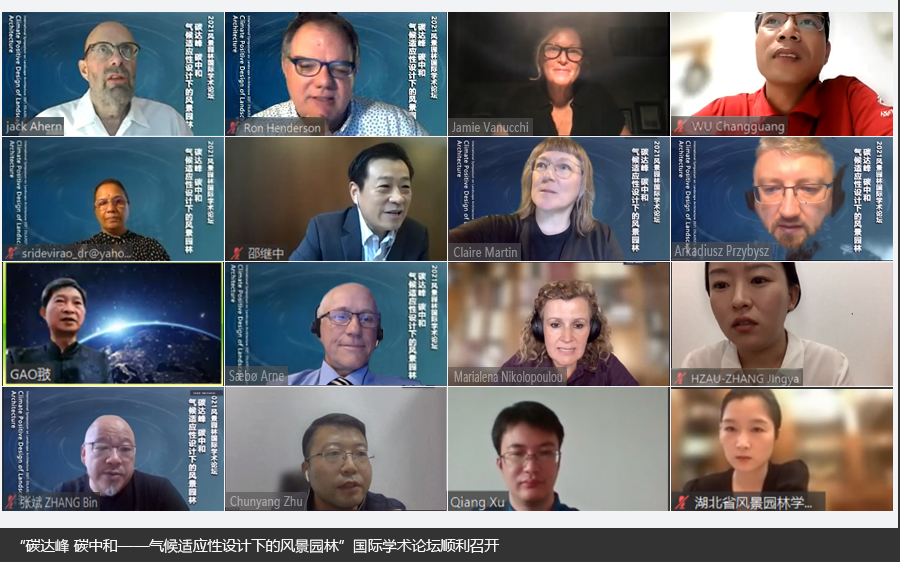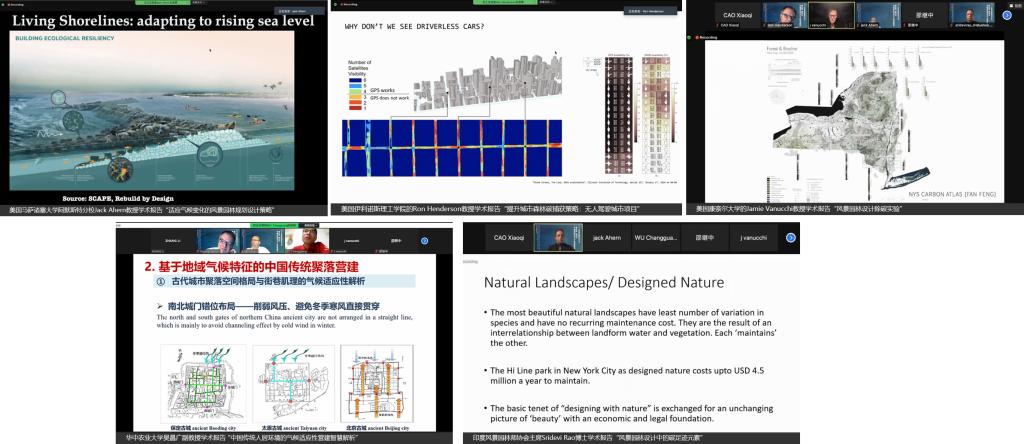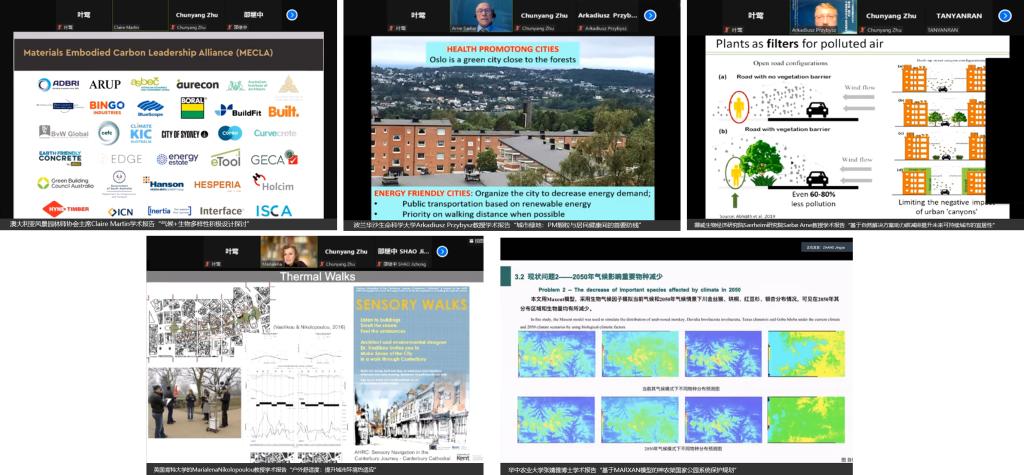
On August 12, 2021, International Symposium on Landscape Architecture 2021 “Carbon Peaking, Carbon Neutrality-Landscape Architecture under Climate Adaptive Design” was held online.The conference was co-sponsored by Huazhong Agricultural University, International Federation of Landscape Architecture Asia-Pacific Region Climate Change Working Group and Landscape Architecture Society of Hubei Province, and organized by the College of Horticulture and Forestry Sciences, Huazhong Agricultural University. The conference was also supported by Chinese Landscape Architecture Magazine, Journal of Huazhong Agricultural University (Social Sciences Edition) and Hubei Landscape Architecture Magazine. 10 experts and scholars from 7 countries gathered online and brought abundant and wonderful thematic academic reports to thousands of online audiences.
At the opening ceremony of the forum, Professor GAO Chi, vice president of CHSLA and president of Landscape Architecture Society of Hubei Province, based on climate issues such as frequent extreme weather and global warning, analyzed the ecology intelligent of the city construction and landscape design in ancient China, elaborated the traditional Chinese ecological knowledge, and sharedsome great landscape architecture projects to respond to climate change. Professor GAO called on landscape architects to think globally, act locally, and to promote sustainable development. The opening ceremony was presided over by Professor XU Qiang, vice dean of College of Horticulture and Forestry Science.

The forum was divided into two parts. The first part was hosted by SHAO Jizhong, Professor from the Department of Landscape Architecture, Huazhong Agricultural University. Jack Ahern, Professor Emeritus, University of Massachusetts, Amherst, proposed that landscape architecture helps to improve urban resilience and tackle climate change through constructing multi-function corridor, the greenway network system, water-centered design approach, biodiversity protection design, and city sponge management.Ron Henderson, Professor, Illinois Institute of Technology, analyzed the impact of self-driving cars on urban design. From the aspects of urban space design, navigation system and policy to explore ways to improve urban tree coverage, and then improve carbon capture. Jamie Vanucchi, Assistant Professor, Cornell University, introduced a series of design and research experiments showing that landscape architecture approach can effectively improve the disaster-affected land remove carbon from the atmosphere and the ability of carbon storage.WU Changguang, associate Professor of Huazhong Agricultural University, discussed the “climate logic” of Chinese traditional human settlement construction from three aspects, and explained the inheritance and innovation of Chinese climate adaptation construction knowledge.Dr. Sridevi Rao, President, Indian Society of Landscape Architects, explained the carbon footprint and carbon emission effect in landscape architecture design based on two cases, and proposed countermeasures.

The second part was hosted by ZHU Chunyang, Associate Professor from the Department of Landscape Architecture, Huazhong Agricultural University. Claire Martin, National President, Fellow, Australian Institute of Landscape Architects (AILA), presented the climate action plan developed by AILA, and explained the duties of landscape architects under climate positive design. Arkadiusz Przybysz,Assistant Professor, Warsaw University of Life Sciences, analyzed the adsorption and blockage of PM by plants under different conditions from the perspectives of green space layout, plant type, weather, time and season. Sæbø Arne, Leader of Norvegian Institute of Bioeconomy (NIBIO), Særheim Research Station, Research Professor, shared some projects to demonstrate that nature-based solutions (NBS) play a good role in urban sustainable development. Marialena Nikolopoulou, Professor, Kent University, explained thermal comfort could affect the use of urban open space and activities, and discussed how to use mechanism in landscape architecture design. Dr. ZHANG Jingya, Lecturer, Department of Landscape architecture, Huazhong Agricultural University, taking Shennongjia National Park as an example, constructed a nature reserve network by MARXAN model, then delineated priority areas and provided implementation plans for conservation and management organizations.

At the closing ceremony of the forum, Professor Zhang Bin, Vice Dean of College of Horticulture and Forestry Science, Huazhong Agricultural University, summarized and evaluated the content and value of the experts’ reports. He said that landscape architects should uphold the spirit of “harmony between man and nature”, learn and understand nature more deeply when faced with the frequent occurrence of extreme weather events around the world. In the context of ecological civilization construction, people should respect nature, conform to nature and protect nature, and build a community of life between man and nature.
Source:http://chfs.hzau.edu.cn/info/1079/9123.htm
Translated by: SONG Dongyi
Supervised by: ZHANG Li

